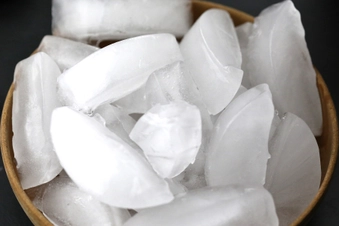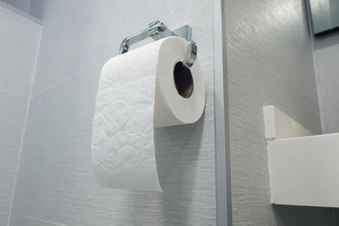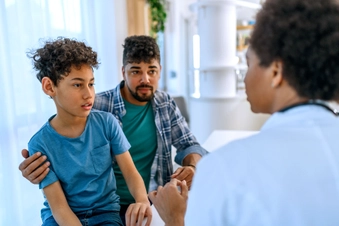Managing Side Effects of pLGG Treatment

pLGG Treatment Side Effects Vary
Pediatric low-grade glioma (pLGG) treatment side effects can be challenging for both you and your child, especially if they’re too young to use words to tell you what they’re feeling. Many physical changes are easy to spot, while emotional ones might be a little trickier. Because side effects will be different based on the type of treatment and its dose, ask your child’s doctor what you might expect now and in the future.

Fatigue
Kids may say they feel tired or weak to describe a lack of energy. Fatigue may be from pLGG treatment or from other of its side effects like low blood counts, not eating enough, or not getting enough sleep. Try to have your child keep regular sleep and wake times. Some exercise during the day can help with sleep at night. Naps can boost energy, too. If fatigue continues once your child can go back to school, half-days at first may help.

Nausea and Vomiting
Your child will likely get an anti-nausea drug along with pLGG treatment to help avoid these common side effects. If that doesn’t help, let the doctor know. Your child may do better with other medications. After your child vomits, help them rinse their mouth with water only and sip on cool, clear liquids to prevent dehydration. When nausea passes, offer foods without strong smells, like toast, oatmeal, or pasta.

Poor Appetite
Cancer treatment and the emotions around it can take away your child’s appetite. Try high-calorie and high-quality snacks to give them nutrients in manageable portions. Don’t worry about scheduling meals by the clock. Whenever they’re hungry is the right time. Even favorite foods can taste different after some pLGG treatments – from bland to metallic – so you may need to change cooking techniques and spices. Cold foods go down more easily than hot ones.

Mouth Issues
Gently brushing and rinsing with plain water helps care for your child’s teeth and avoid mouth sores, a pLGG treatment side effect. Sucking on ice chips and sugarless hard candy can moisten a dry mouth. If mouth sores do happen, avoid giving crusty, spicy, salty, or acidic foods like citrus foods, pretzels, and chips. Soft foods at room temperature are easier to swallow and less irritating. It might also be easier for your child to drink through a straw.

Constipation or Diarrhea
Either can be a problem, depending on the pLGG treatment. If your child has diarrhea, avoid offering gassy foods like broccoli, cabbage, and onions, as well as high-fiber and fatty foods, until it passes. Cooked foods are better than raw. When the problem is constipation, increase high-fiber foods, like whole grains, legumes, and dried fruits, to get things moving. You might do this in advance if the doctor says constipation is likely. What helps with both: lots of healthy fluids.

Hair Loss
If hair loss is likely, talk to your child about it and let them share their feelings. Colorful hats, scarves, and sports caps can be positive morale boosters. Together, you might decide to shave their head rather than watch hair fall out in clumps. Ask your medical team about a good moisturizer in case of itchiness. Let your child know hair will grow back, maybe even with a temporary, surprising twist: a different color or texture – thinner, straighter, or curlier than before.

Low Blood Cell Counts
Called myelosuppression, a decrease in red and white blood cell and platelet production is a common chemo side effect. Running low on platelets increases the risk of bruising and bleeding, so avoid tumbles. Low white blood cells boosts the risk of infection, so look out for early signs of illness like chills, fever, and a hard time breathing. Low red blood cells can lead to anemia, so look for greater fatigue, pale skin, and dizziness. Report any signs to the doctor right away.

Infection Risk
Since a low white blood cell count means being less able to fight off infection, help your child take steps to avoid germs. As much as loved ones want to visit, turn down requests from anyone who is sick, even with a mild cold. All family members who live with your child should wash their hands more often to keep from spreading germs. Follow all guidelines from the doctor, like being extra careful when prepping food – rinse all produce very well, and fully cook meat.

Mood Swings
Your child may have emotional ups and downs – from sadness about having cancer, to hope that treatment will help, to anxiety about tests and needing treatment in the future. These may be the same emotions you’re facing. A young child can have stress, even if they can’t express it in words. Being there for them, listening, and showing affection go a long way. Another voice – a counselor or child-life specialist – can be good for them to hear if feelings become overwhelming.

Ideas to Ease Emotions and Discomfort
Ideas to help your child express feelings and lower stress, on their own, with you, or a with trained therapist, include:
Art therapy. Draw, paint, or color.
Music therapy. Listen to favorite songs.
Laugh therapy. Watch a funny movie.
Guided imagery. Your child focuses on positive images instead of fears.
Distraction therapy. You engage your child in diversions to take the focus away from their distress.
Cognitive behavioral therapy (CBT). A therapist uses techniques to help change the way your child thinks and feels about cancer.

More Help From the Specialist Team
Your child’s doctors should explain possible side effects of pLGG treatment and offer solutions, so you don't have to come up with all the answers on your own. Reach out to other team members as well:
- A child-life specialist for developmental and emotional issues
- A hospital-based education coordinator to work with your child and their school
- A physical therapist to create a fitness plan to help rebuild stamina
- A registered dietitian for a nutrition and anti-nausea plan

Late Effects
We don’t yet know all possible side effects from newer pLGG treatments, especially late effects, those that appear 6 months or more after treatment. Some come from the treatment, others from the cancer, like when pLGG on the optic pathway causes vision loss. Known late effects include growth, hormonal, or behavior changes, from learning issues to coordination problems. Ask the doctor what symptoms to look for and when they should be checked out.

Cognitive Changes
Of all the late effects, cognitive late effects that disturb learning are important to face. Your child might have a hard time with memory and, in turn, writing, reading, spelling, and math. They might have difficulty with concentration, finishing schoolwork, and problem-solving. Work with the medical team and people at your child's school to watch for any signs of these problems early on and help them do well in school.
Show Sources
IMAGES PROVIDED BY:
- E+/Getty Images
- DigitalVision/Getty Images
- Moment/Getty Images
- Moment/Getty Images
- Moment/Getty Images
- Moment/Getty Images
- Moment/Getty Images
- Moment/Getty Images
- Cavan/Getty Images
- Moment/Getty Images
- DigitalVision/Getty Images
- Moment/Getty Images
- E+/Getty Images
- Moment/Getty Images
SOURCES:
CureSearch for Children’s Cancer: “Treatment Side Effects,” “Fatigue,” “Nausea and Vomiting,” “Appetite,” “Mouth Sores and Dry Mouth,” “Diarrhea,” “Constipation,” “Hair Loss,” “Low Platelet Count,” “Low Red Blood Cell Count,” “Low White Blood Cell Count,” “School Support.”
The Royal Marsden NHS Foundation Trust: “Low Grade Glioma.”
Children’s Cancer Network: “Wigs.”
National Cancer Institute: “Hair Loss (Alopecia) and Cancer Treatment,”
“Children with Cancer: A Guide for Parents,” “Childhood Glioma.”
Neuro-Oncology: “Pediatric low-grade gliomas: implications of the biologic era.”